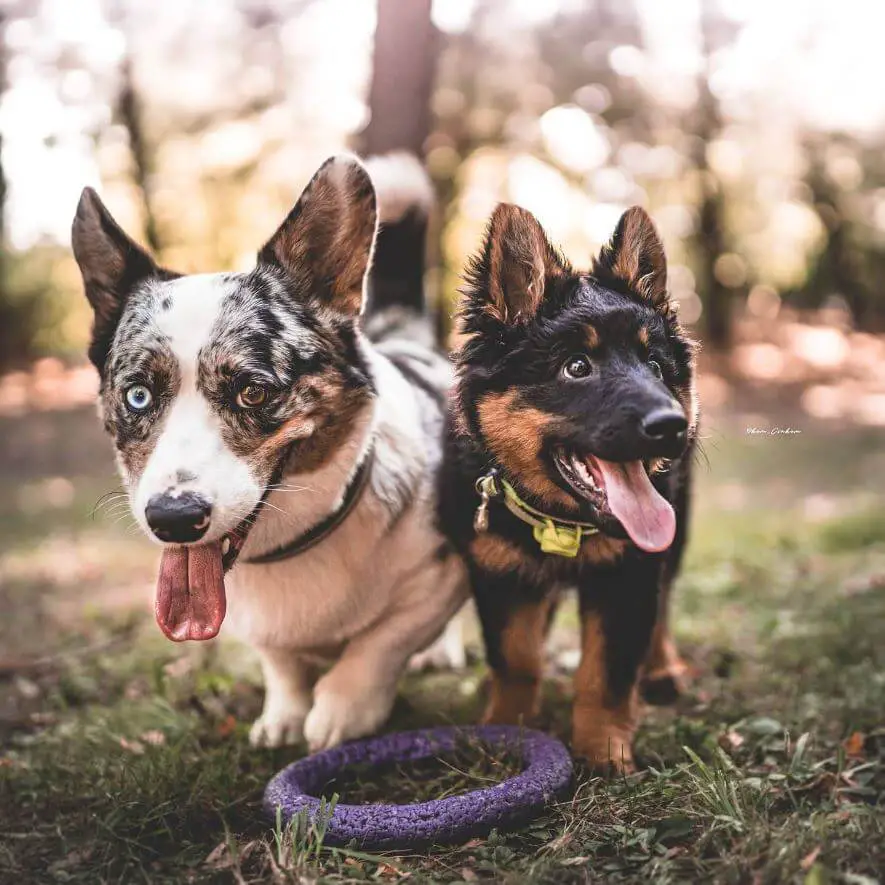As pet owners, we often wonder how our furry friends perceive the world around them. One common question is whether dogs can see color like humans do. In this article, we will delve into the fascinating topic of canine vision and explore whether dogs can see colors. By understanding their unique visual capabilities, we can gain insight into how dogs experience the vibrant world we share with them.

The Basics of Canine Vision:
To comprehend how dogs perceive color, it’s important to understand the fundamentals of their visual system:
- Dichromatic Vision: Unlike humans, who have trichromatic vision, dogs possess dichromatic vision. This means they have two types of color receptors, or cones, in their eyes compared to humans’ three cones.
- Cone Types: Dogs primarily have cones sensitive to two colors: blue-violet and yellow. These colors are on the cooler end of the spectrum, and they perceive them as distinct hues.
- Limited Color Perception: Due to their dichromatic vision, dogs’ color perception is less vibrant than ours. They see a more muted version of the world and have difficulty distinguishing between certain colors, particularly those in the red and green spectrum.

Can Dogs See Color?
While dogs’ color vision differs from humans, it doesn’t mean they see the world in black and white. Dogs can perceive and differentiate between some colors, although their range is limited. Here are some key points to consider:
- Blue-Yellow Color Discrimination: Dogs have a higher sensitivity to shades of blue and yellow. These colors appear more distinct to them, and they can differentiate between various shades within this range.
- Difficulty with Red-Green Differentiation: Dogs struggle to distinguish between certain colors in the red and green spectrum. For them, these colors may appear more similar or blend together, leading to potential confusion.
- Superior Low Light Vision: While dogs may have limitations in perceiving certain colors, they excel in low light conditions. Their eyes contain more light-sensitive cells called rods, enabling them to see better in dim lighting compared to humans.

Understanding Your Dog’s Visual Experience:
While dogs may not perceive colors in the same way humans do, their visual acuity surpasses ours in other aspects. Here are a few important considerations:
- Focus on Movement and Contrast: Dogs rely heavily on motion and contrast rather than color to navigate their surroundings. They can detect subtle movements and notice sharp contrasts, making them adept at tracking prey or noticing small changes in their environment.
- Use of Other Senses: Dogs rely on their highly developed sense of smell and acute hearing to complement their visual perception. They gather information about the world through multiple senses, creating a comprehensive understanding of their surroundings.

Although dogs’ color vision is different from humans, they can still perceive certain colors, particularly in the blue and yellow spectrum. Their visual system is adapted for different purposes, emphasizing motion, contrast, and other senses to navigate their environment. Understanding the nuances of canine vision allows us to appreciate their unique perspective and interact with them in ways that cater to their strengths. So, while your dog may not see the world as a vibrant kaleidoscope of colors, their extraordinary sensory abilities enrich their lives in countless other ways.
